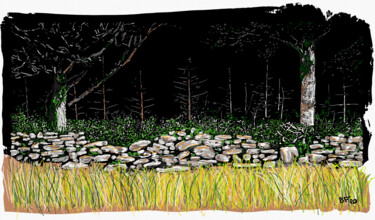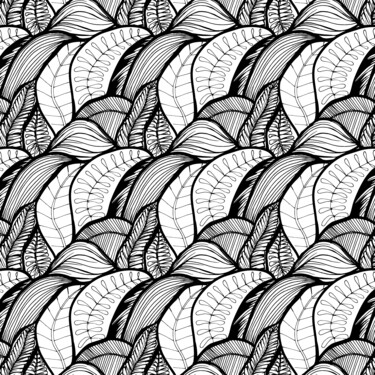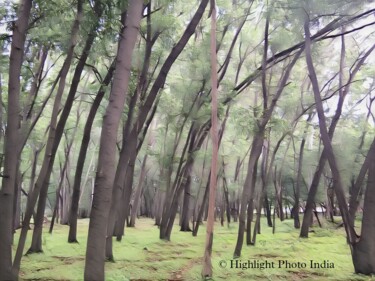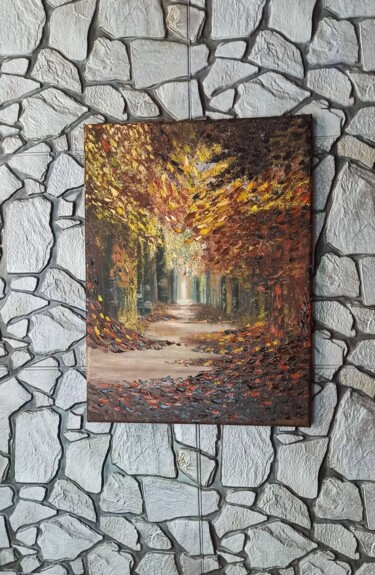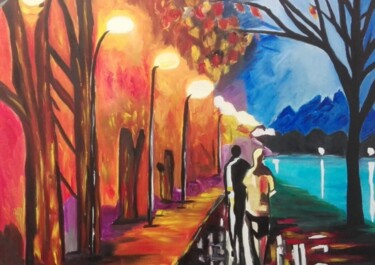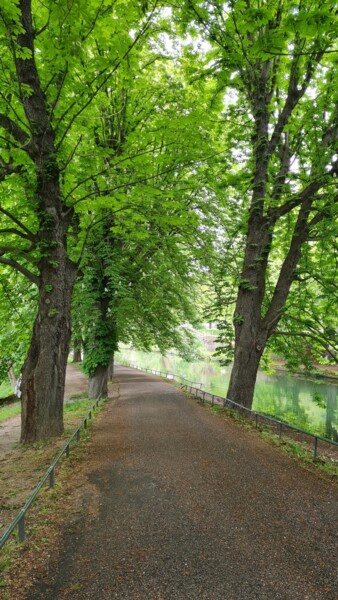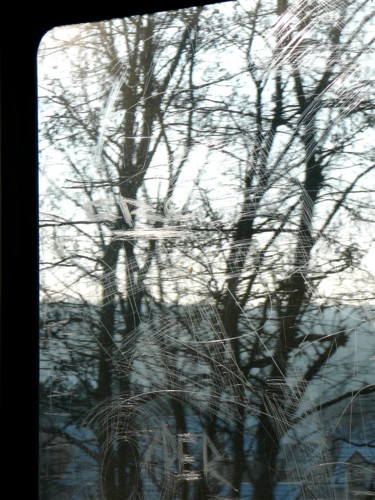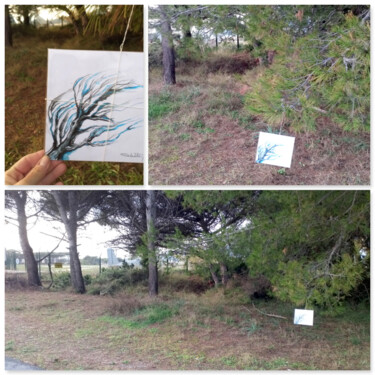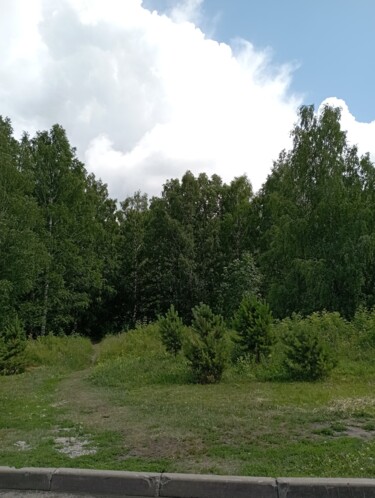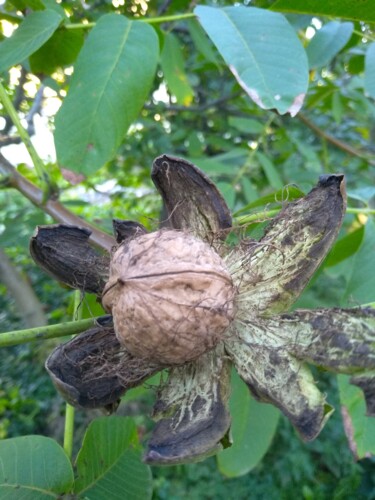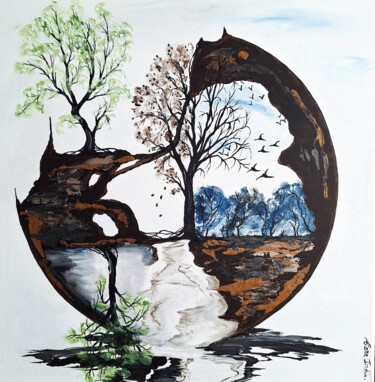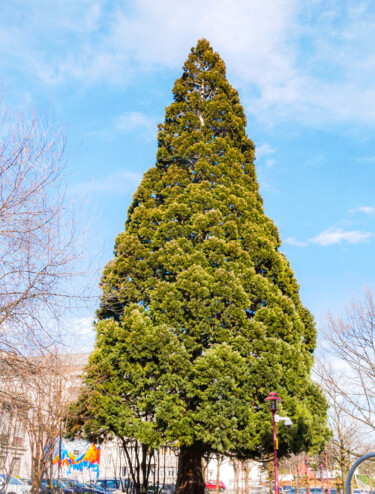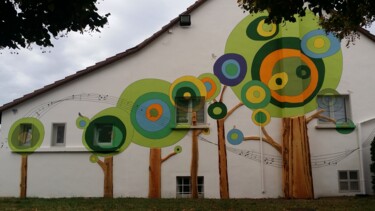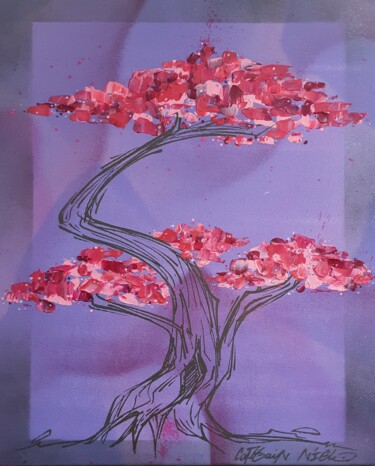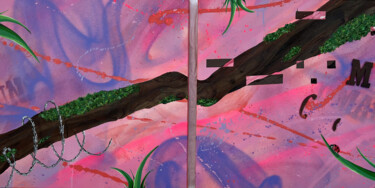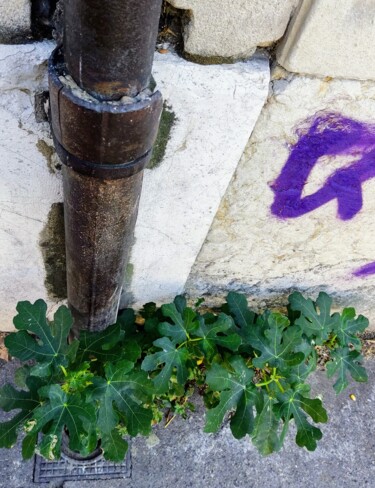27 Oryginalne dzieła sztuki, limitowane edycje i druki:
Niezależnie od tego, czy chodzi o sztukę uliczną, sztukę miejską czy graffiti, te nowe trendy artystyczne od kilkudziesięciu lat kształtują się we wszystkich większych miastach: od Nowego Jorku po Paryż czy od Londynu po Tokio przez Rio. z Janeiro. Po pierwsze, użycie słowa „sztuka uliczna” jest stosunkowo nowe. Pochodzi z lat 2000. Wykorzystano go w 2006 roku podczas pierwszych aukcji dzieł sztuki reprezentujących ten nurt artystyczny. W 2008 roku wystawa „sztuki ulicznej” w Tate Modern w Londynie narzuciła ten termin na określenie tego nowego, szczególnego ruchu artystycznego charakteryzującego się wielką różnorodnością stylów (graffiti, kolaże, szablony, instalacje, freski, mozaiki, naklejki...)
Można powiedzieć, że jest to globalny ruch artystyczny, który rozpoczął się w latach 60. i żyje do dziś. Różnorodność wykorzystywanych mediów, stylów, technik oraz swoboda tworzenia w przestrzeni publicznej. To nowy ruch, który wszedł do historii sztuki.
Kto stworzył sztukę uliczną?
Od niepamiętnych czasów na ścianach znajdowano ślady dzieł sztuki. Niezależnie od tego, czy chodzi o sztukę ciemieniową w jaskiniach Lascaux, czy nazwiska znalezione na ścianach Pompejów, sztuka rysowania i graffiti w przestrzeni publicznej jest obecna przez cały czas. To, co dziś nazywa się sztuką uliczną, nie jest więc zupełnie nowe.
We Francji w latach 30. artysta Brassaï, zainteresowany graffiti, postanowił je sfotografować, aby uwiecznić je na zdjęciach. W latach pięćdziesiątych Jacques Villeglé (1926-) i Raymond Hains odzyskali plakaty z ulicy, aby odtworzyć dzieło sztuki z tymi poszarpanymi fragmentami plakatu. W ten sposób położyli podwaliny pod to, co później stało się sztuką uliczną. W tym samym czasie Gérard Zlotykamien (1940-), w 1963 roku zaczął malować na ulicy czarno-czerwone sylwetki, które nazwał „efemerydami”. Swoje sylwetki będzie malował jeszcze przez kilka lat.
Ten motyw sylwetek i użycie farby w sprayu są również ważne w twórczości Ernesta Pignona-Ernesta (1942-). Jego sygnaturą są wycięte z szablonu sylwetki i narysowane na ścianach. Zaatakuje pewne miejsca i ściany swoimi dziełami, jak dzisiejsi artyści graffiti.
Pod koniec lat 60. w Filadelfii (Stany Zjednoczone) pierwszym z „graferów” był artysta Cornbread, który wszędzie dopisywał swój podpis. To narodziny pierwszych tagów: Wielkie litery wykonane aerozolem. Wielu młodych ludzi idzie za ich przykładem i umieszcza swoje nazwiska na ścianach.
W 1969 roku Julio 204 w Nowym Jorku jako jeden z pierwszych oznaczył miasto, jako pierwszy dodał swój numer ulicy do swojego podpisu. Zjawisko, które stanie się wyznacznikiem ruchu nowojorskiego. Taki 183 jest naprawdę pierwszym taggerem, który stał się znany w mieście, pokrywając ściany i pociągi metra swoimi podpisami.
W obliczu wzrostu liczby artystów graffiti, artyści zaczynają szukać możliwości wyróżnienia się. Stay High 149 jako pierwszy dodaje elementy graficzne do swojej sygnatury, podwajając metkę i dodając halo widoczne w serii Le Saint. Idąc za tym przykładem, wielu artystów graffiti pójdzie za jego przykładem, a styl będzie stawał się coraz bardziej pomysłowy. Faza 2 to wybitny artysta, który zmodyfikuje zawieszkę, tworząc coraz bardziej oryginalne kształty liter i kończąc jej kompozycję strzałką.
Płodny artysta późnych lat 70., Seen, tworzył prace w jasnych, kontrastowych kolorach, podczas gdy Blade pracował nad perspektywą i geometrią w swoich pracach. Jest jednym z pierwszych artystów zauważonych przez galerię i ma swoją pierwszą wystawę.
Fenomen street artu rozprzestrzenia się na całym świecie
Styl ewoluuje coraz bardziej, czasami odchodząc od oryginalnego graffiti. Prawdziwe polowanie prowadzone przez władze na artystów, którzy tagują drzwi i wagony metra, nasila się, artyści zmuszeni są zdwoić swoją pomysłowość do pracy, by być coraz szybszym w swojej pracy i kreatywności, aby móc wyróżnić się na tle innych artystów . Doprowadzi to również do zmiany miejsca ich pracy i podwyższenia murów jako wsparcia dla ich osiągnięć. Ewolucja ich narzędzia pracy, jakim jest aerozol, może ewoluować. Pojawia się wiele kolorów, a końcówki natryskowe umożliwiają artystom tworzenie różnych grubości linii.
Artyści Futura, Dondi White, Rammellzee czy A-One byli czołowymi artystami przełomu lat 79. i 80. w USA. Są też pierwszymi, którzy nadają swojej pracy mniej lub bardziej polityczne przesłanie. Od 1979 roku miejsca sztuki i galerie alternatywne interesują się i wystawiają artystów street artu. Sukces stał się międzynarodowy i od lat 80. artyści Blade, Futura czy Seen wystawiali się na licznych wystawach w Europie. Europejskie muzea, takie jak muzeum Boijmans Van Beuningen w Rotterdamie, otrzymają dzieła sztuki ulicznej. Wraz z wystawami i odkryciem sztuki ulicznej poprzez podróże, od 1983 do 1984 roku, zjawisko rozprzestrzeniło się w Europie (Francja, Włochy, Niemcy...)
W Paryżu pierwszym znanym artystą graffiti jest Bando, który importuje graffiti do Francji i dołącza do artystów Blek le Rat i Jérôme Mesnager, którzy wykonują szablony na artystach przy użyciu miejskich podpór.
Jąkające się początki paryskiego graffiti koncentrują się na brzegach Sekwany między Pont Neuf a Pont de la Concorde. Intensyfikuje się wymiana między europejskimi artystami. Angielski artysta Mode 2 będzie zatem pracował w Paryżu z Bando, który następnie będzie współpracował z Holendrem Sho. Intensyfikują się również wymiany z artystami z Ameryki Północnej, takimi jak JonOne, który poznał Bando w Nowym Jorku, zamierza mu pokazać, co się dzieje w Paryżu. JonOne następnie przyjeżdża do Paryża, następnie dołącza do Bad Boy Crew (BBC) i zostaje na stałe w stolicy Francji. JonOne będzie odróżniał się od innych artystów, skupiając się na ruchu, a nie na liternictwie. Na początku lat 90. BBC wystawiała w całej Europie.
Jakie jest przesłanie street artu?
Jeśli do tej pory street art był zasadniczo techniką tagowania, to od lat 90. sztuka miejska przeżyje małą rewolucję. Niektórzy artyści zastąpią podpis przedstawieniami twarzy, portretami… – jak Shepard Fairey alias Obey. Jeszcze jako student w 1989 roku stworzył ikonę „André the Giant Has a Posse” i zrobił z niej naklejkę, którą rozdawał swoim przyjaciołom, prosząc ich, aby wszędzie ją przyklejali. Jego celem jest uświadomienie nam, że obrazy, które widzimy, mają znaczenie i ważne jest, aby je zrozumieć.
Nowa generacja nie będzie już używać tylko puszki aerozolu do inwazji na miejską przestrzeń, ale użyje naklejek, kolażu, mozaiki, szablonu…
Francuski Space Invider zaatakuje przestrzeń publiczną, przyklejając mozaikowe tessery na ścianach, aby stworzyć efekty wizualne inspirowane grą zręcznościową Space Invaders z 1978 roku. Invader zainstalował ponad 3000 części w ponad 60 miastach na całym świecie.
W odpowiedzi na wizualne zanieczyszczenie, jakie tworzy komunikacja komercyjna w przestrzeni publicznej, artysta Zevs odwróci logo głównych marek, roztapiając je po zmroku na fasadach domów towarowych. Stworzy również cienie obiektów małej architektury, malując cienie tych obiektów na chodnikach.
Przez lata artysta Banksy będzie wykorzystywał swoją sztukę do potępiania wad społeczeństwa za pomocą humoru, poezji i szokujących efektów wizualnych, w szczególności za pomocą techniki szablonowej. Jego proste i wyrafinowane sceny zdumiewają i naznaczają umysły. Szybko stał się jednym z najbardziej znanych artystów. Inni francuscy artyści będą używać tej techniki, jak Miss.Tic, Blek le Rat, Jef Aérosol czy C215.
Sztuka ulicy stale się rozwija. Od prostego graffiti z jego początków po graffiti Seen czy JonOne, techniki są zróżnicowane. Artyści graffiti nadal używają puszek ze sprayem do tworzenia swoich prac. Ale wykorzystują też nowe techniki i nośniki, takie jak mozaika, szablon, naklejka, instalacje, rzeźba czy projekcja wideo.
Niektórzy znani artyści sztuki ulicznej
Banksy'ego
Artysta, któremu udało się utrzymać swoją tożsamość w tajemnicy przed mediami. Jego prace wykonane głównie w formie szablonu, początkowo na ulicach Londynu, zanim zawładnęły ulicami całego świata.
Jego satyryczna i wywrotowa twórczość ma na celu podkreślenie odmiennego niż ambientowy sposobu myślenia. Zwłaszcza środki masowego przekazu. Jego praca koncentruje się na silnych żądaniach politycznych i społecznych.
Dokument „Wyjście przez sklep z pamiątkami” z 2010 roku był nominowany do Oscara za najlepszy film dokumentalny.
Shepard Fairey
Urodzony w 1970 roku, jest współczesnym artystą znanym z graficznych serigrafii. Znany najpierw ze swoich naklejek, jego praca stała się sławna dzięki plakatowi przedstawiającemu Baracka Obamę podczas wyborów prezydenckich w USA w 2008 roku.
Jego prace znajdują się w zbiorach wielu muzeów, takich jak Museum of Modern Art w Nowym Jorku czy Victoria and Albert Museum w Londynie.
Aerozol Jeffa
Artysta urodzony w 1957 roku. Jest jednym z pionierów street artu we Francji początku lat 80. Artysta szablonowy, tworzy portrety osobowości takich jak Elvis Presley, Lennon, Basquiat... ale także osoby anonimowe jak dzieci, przechodnie czy żebracy.
Cytaty artystów street artu
Banksy'ego
„Graffiti to jedna z niewielu dostępnych dróg, gdy nie masz prawie nic. I chociaż nie możesz wyleczyć biedy na tym świecie obrazem, przynajmniej możesz sprawić, że ktoś się uśmiechnie, gdy sika”.
„Największych zbrodni nie popełniają ci, którzy łamią zasady, ale ludzie, którzy wykonują rozkazy. To oni zrzucają bomby i masakrują wioski”.
Gerard Złotykamien
„Stworzenie to choroba, anomalia, z której nie mam zamiaru wyleczyć!”
Jakie są największe festiwale sztuki ulicznej?
Na całym świecie odbywa się wiele festiwali sztuki ulicznej i sztuki miejskiej:
- We Francji Grenoble Street Art Fest, efekt Underground w Paris la Défense, Zoo Art Show w Lyonie.
- W Wielkiej Brytanii Bristol's Upfest
- W Norwegii NuArt
- W Kanadzie Mural w Montrealu
- W Hiszpanii Asalto, Saragossa, Bloop Festival, Ibiza, Arco Madrid, Miau Fanzara
- W USA, Wynwood Miami, The Jersey City Mural Arts Program, Detroit - Murale na rynku, Hawaje Kaka'ako - Pow! Wow!, Sacramento - Szeroko otwarte ściany, Atlanta - Żywe ściany
- W Belgia, Ostenda - Kryształowy Statek
- W Szwajcarii Art Basel
- W Polsce Łódź - Urban Forms
- W Chinach, Hong Kongu – Hkwalls
Jakie filmy o sztuce ulicznej warto zobaczyć?
- Dostać się do ściany: dokument o Banksym
- Chats perchés: film dokumentalny o M Chat
- Wyreżyserowany przez francuskiego artystę ulicznego JR.
- Śródmieście 81 – Jean-Michel Basquiat: film powraca do początków kariery Basquiata.
- Stations of the Elevated: film dokumentalny o graffiti w Nowym Jorku.
- Wild Style, film z lat 80.: dokument o amerykańskiej kulturze miejskiej i graffiti.
- Pisarze 1983-2003, 20 lat graffiti w Paryżu
Discover contemporary artworks on Artmajeur
Contemporary art is a vibrant constellation of artistic expressions. This creative universe encompasses a wide array of mediums, from paintings, sculpture, and photography to drawing, printmaking, textile art, and digital art, each medium a star shining with its own distinct radiance. Artists use diverse supports and materials to bring their visions to life, such as canvas, wood, metal, and even innovative digital canvases for the creation of virtual masterpieces.
A contemporary painting, for instance, may weave its story through the masterful strokes of acrylic or oil, while a contemporary sculpture might sing its song in the language of stone, bronze, or found objects. The photographic arts capture and manipulate light to produce striking images, while printmaking employs techniques like lithography and screen-printing to produce multiples of a single, impactful image. Textile art plays with fabrics and fibers, whereas digital art pushes the boundaries of creation with innovative technology.
The allure of contemporary art lies in its boundary-pushing nature, its relentless quest for experimentation and its constant reflection of the evolving human experience. This boundless creativity, coupled with its strong social and personal commentary, makes every piece of contemporary art a unique emblem of its time, a mirror held up to the realities and dreams of our complex world. It whispers to us, moves us, provokes thought, and kindles a deep emotional response, stirring the soul of anyone willing to listen. It is, indeed, the language of emotions and ideas, spoken in the dialect of our era.
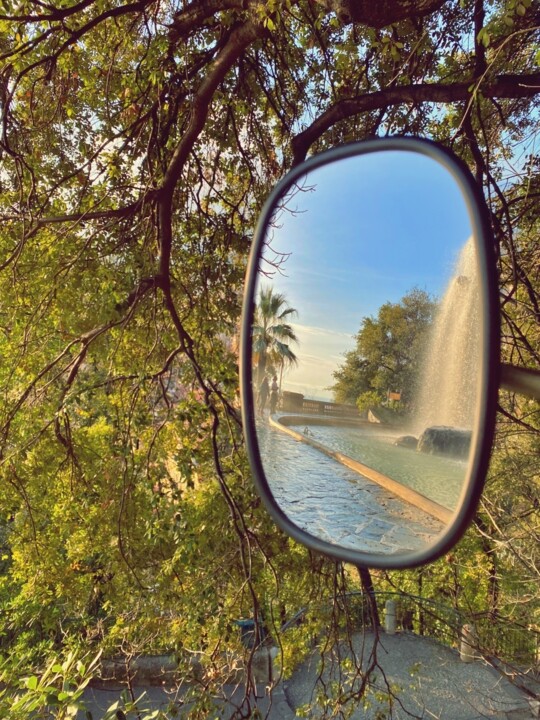
©2024 Annie Gazé
Origins and history of contemporary art
The story of contemporary art unfolds in the mid-20th century, marked by seismic shifts in artistic expression. Post-World War II, around the 1950s and 1960s, artists began experimenting beyond traditional confines, challenging the norms of what art could be. This revolutionary epoch birthed myriad new movements and artistic forms such as abstract expressionism, pop art, and minimalism. Paintings, once confined by realism, embraced abstraction, as artists used color and form to express emotions and ideas. Notable periods like the advent of pop art in the late 1950s and early 1960s saw artworks mimicking popular culture and mass media, reflecting society’s shifting focus.
The sculptural arts, too, witnessed a metamorphosis. Sculptors started to experiment with new materials and forms, often creating artworks that interacted with the viewer and the surrounding space, fostering a sense of engagement. Drawing, a timeless practice, also evolved, with artists incorporating innovative techniques and concepts to redefine its role in contemporary art.
Photography, a relatively new medium, emerged as a powerful tool in the contemporary art landscape. Born in the 19th century, it truly came into its own in the latter half of the 20th century, blurring the lines between fine art and documentation. Printmaking, a practice dating back to ancient times, saw renewed interest and experimentation with techniques like lithography, etching, and screen printing gaining prominence.
The realm of textile art expanded dramatically, as artists began to appreciate the versatility and tactile quality of fabric and fibers. Artists began using textiles to challenge the boundaries between fine art, craft, and design.
The dawn of digital technology in the late 20th century heralded a new age for contemporary art. Digital art emerged as artists started leveraging new technologies to create immersive, interactive experiences, often blurring the line between the virtual and the physical world.
Through these transformative periods, the essence of contemporary art has remained the same: a dynamic, evolving reflection of the times we live in, continually pushing boundaries and embracing the new, always questioning, always exploring.

©2024 Fabrice Gand
Evolutions of theses contemporary works in the art market
As we navigate through the 21st century, the dynamic landscape of contemporary art continues to evolve and expand, reflecting our ever-changing world. Contemporary paintings, once primarily confined to two-dimensional canvases, now embrace a multitude of forms and techniques, ranging from mixed media installations to digital creations, each piece a rich a weaving of thoughts, emotions, and narratives. Sculpture, too, has ventured far beyond traditional stone and bronze, with artists incorporating light, sound, and even motion, embodying the ephemerality and flux of the modern world.
Photography, in the hands of contemporary artists, has expanded its horizons, seamlessly blending with digital technology to create breathtaking imagery that challenges our perception of reality. Drawing, as well, has transcended the borders of paper, incorporating multimedia elements and exploratory techniques to redefine its role in the artistic discourse. Printmaking continues to flourish, with contemporary artists using traditional methods in innovative ways to deliver potent social and personal commentaries.
Textile art, once considered a craft, now holds a prominent place in the contemporary art world, with artists using it to explore issues of identity, tradition, and cultural heritage. Meanwhile, digital art, the newest member of the contemporary art family, has revolutionized the way we create and interact with art, presenting immersive experiences that blur the boundary between the virtual and the physical.
These diverse forms of contemporary art hold significant value in the current art market, not only due to their aesthetic appeal but also their ability to encapsulate and communicate complex ideas and emotions. Collectors, curators, and art lovers worldwide seek these works, drawn to their inherent dynamism, their innovative use of materials, and their eloquent expressions of our shared human experience. As a testimonial to our times, these contemporary artworks encapsulate the pulse of our society and the resonance of individual voices, forever etching our collective narrative into the annals of art history.
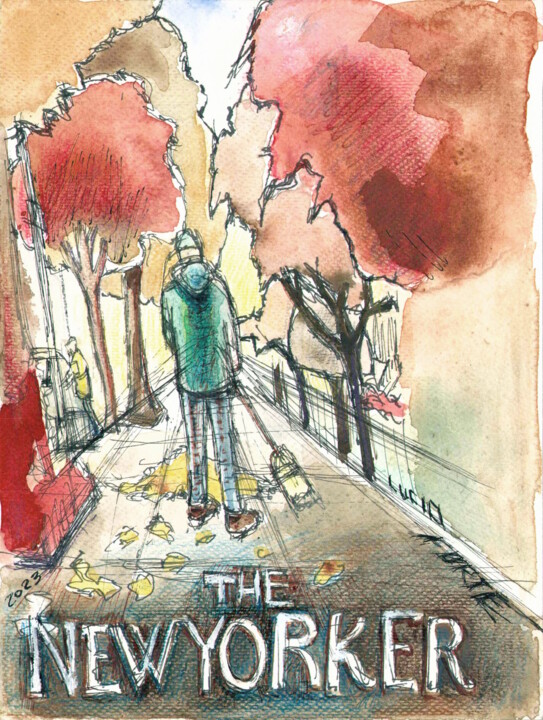
©2023 Lucio Forte
Famous Contemporary Artists
As we delve into the vibrant realm of contemporary art, we encounter an array of artists who shape this dynamic field. Each a master in their medium - painting, sculpture, photography, drawing, printmaking, textile, or digital art - they push artistic boundaries, reflecting our era and challenging perceptions. Let’s explore these remarkable contributors and their groundbreaking works.
1. Gerhard Richter - Known for his multi-faceted approach to painting, Richter challenges the boundaries of the medium, masterfully oscillating between abstract and photorealistic styles. His works, whether featuring squeegee-pulled pigments or blurred photographic images, engage in a fascinating dialogue with perception.
2. Jeff Koons - A significant figure in contemporary sculpture, Koons crafts monumental pieces that explore themes of consumerism, taste, and popular culture. His iconic balloon animals, constructed in mirror-polished stainless steel, captivate with their playful yet profound commentary.
3. Cindy Sherman - An acclaimed photographer, Sherman uses her lens to explore identity and societal roles, particularly of women. Renowned for her conceptual self-portraits, she assumes myriad characters, pushing the boundaries of photography as a medium of artistic expression.
4. David Hockney - Hockney, with his prolific output spanning six decades, is a pivotal figure in contemporary drawing. His bold use of color and playful exploration of perspective convey an intoxicating sense of joy and an unabashed celebration of life.
5. Kiki Smith - An innovative printmaker, Smith’s work explores the human condition, particularly the female body and its social and cultural connotations. Her etchings and lithographs speak to universal experiences of life, death, and transformation.
6. El Anatsui - A master of textile art, Anatsui creates stunning tapestry-like installations from discarded bottle caps and aluminum scraps. These shimmering, flexible sculptures blend traditional African aesthetic with contemporary art sensibilities, speaking to themes of consumption, waste, and the interconnectedness of our world.
7. Rafael Lozano-Hemmer - A leading figure in digital art, Lozano-Hemmer utilizes technology to create interactive installations that blend architecture and performance art. His work, often participatory in nature, explores themes of surveillance, privacy, and the relationship between people and their environments.
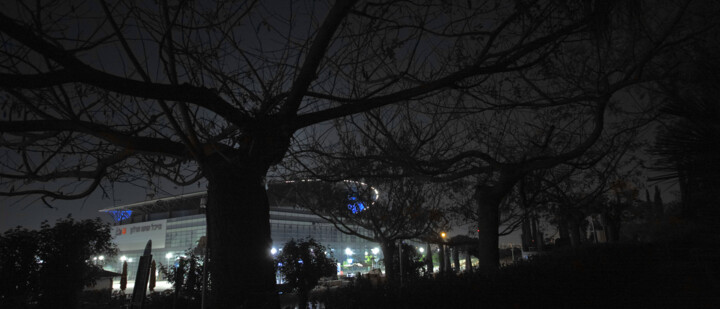
©2020 Igal Stulbach
Notable contemporary artworks
The contemporary art landscape is a dynamic patchwork of diverse expressions and groundbreaking ideas, each artwork a unique dialog with its audience. Here are a selection of some renowned contemporary artworks, spanning various media such as painting, sculpture, photography, drawing, printmaking, textile art, and digital art, that have profoundly influenced this vibrant movement.
"Cloud Gate" by Anish Kapoor, 2006 - This monumental stainless steel sculpture, also known as "The Bean," mirrors and distorts the Chicago skyline and onlookers in its seamless, liquid-like surface, creating an interactive experience that blurs the line between the artwork and the viewer.
"Marilyn Diptych" by Andy Warhol, 1962 - An iconic piece of pop art, this silkscreen painting features fifty images of Marilyn Monroe. Half brightly colored, half in black and white, it reflects the dichotomy of celebrity life and its influence on popular culture.
"Rhein II" by Andreas Gursky, 1999 - This photographic artwork, a digitally-altered image of the Rhine River, is celebrated for its minimalist aesthetic. It strips the landscape to its bare essentials, invoking a sense of tranquility and vastness.
"Black Square" by Kazimir Malevich, 1915 - A revolutionary painting in the realm of abstract art, this piece, featuring nothing more than a black square on a white field, challenges traditional notions of representation, symbolizing a new era in artistic expression.
"Puppy" by Jeff Koons, 1992 - This giant sculpture, a West Highland Terrier blanketed in flowering plants, explores themes of innocence, consumer culture, and the interplay between high art and kitsch. It’s a delightful blend of traditional sculpture and garden craft.
"Re-projection: Hoerengracht" by Ed and Nancy Kienholz, 1983-1988 - A room-sized tableau representing Amsterdam’s red-light district, this work combines elements of sculpture, painting, lighting, and found objects. It engages viewers in a stark commentary on commodification and objectification.
"Untitled" (Your body is a battleground) by Barbara Kruger, 1989 - This photomontage, combining black-and-white photography with impactful text, explores issues of feminism, identity, and power. Its potent, confrontational message is a prime example of the power of text in contemporary visual art.
"For the Love of God" by Damien Hirst, 2007 - This sculpture, a platinum cast of a human skull encrusted with 8,601 diamonds, probes themes of mortality, value, and the human fascination with luxury and decadence. It’s a compelling blend of macabre and magnificence.
"Physical impossibility of Death in the Mind of Someone Living" by Damien Hirst, 1991 - This artwork, featuring a tiger shark preserved in formaldehyde, blurs the line between traditional sculpture and biological specimen. It prompts viewers to contemplate mortality and nature’s ferocity.
"One and Three Chairs" by Joseph Kosuth, 1965 - A piece of conceptual art, it presents a physical chair, a photograph of a chair, and a dictionary definition of a chair, thus exploring the relationship between language, picture, and referent in art.
These pieces, in their diversity, exemplify the rich tapestry of contemporary art, each piece a unique commentary on our world and a testament to the limitless potential of creative expression.
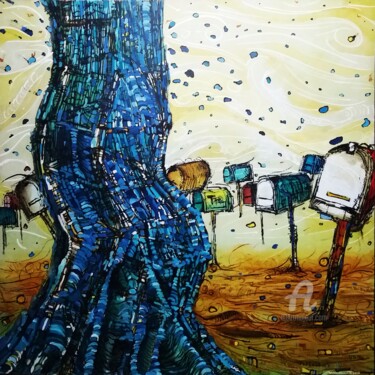
Marcos Costa
Akryl na Płótno | 47,2x47,2 in
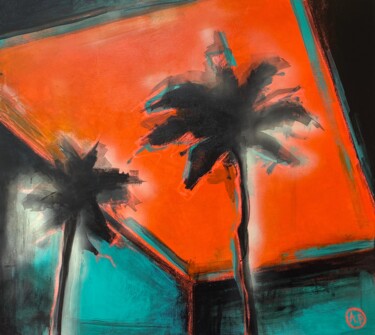
Anna Prykhodko
Akryl na Płótno | 35,4x39,4 in
